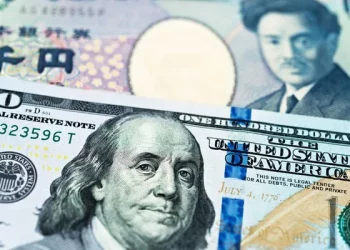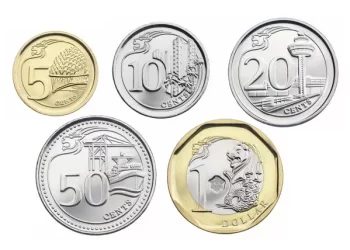The Chinese yuan, officially known as the Renminbi (RMB), is the legal tender of the People’s Republic of China. Issued by the People’s Bank of China, the yuan is the primary medium of exchange within the country’s vast and dynamic economy. It comes in various denominations, which are crucial for facilitating transactions of different magnitudes. The base unit of the yuan is the “yuan” itself. In addition to this, there are subunits. The jiao is one – tenth of a yuan, and the fen is one – hundredth of a yuan. However, in day – to – day transactions, the fen is rarely used. The common banknotes in circulation include 1 yuan, 5 yuan, 10 yuan, 20 yuan, 50 yuan, and 100 yuan. Coins are also part of the currency system, with denominations such as 1 yuan, 5 jiao, and 1 jiao. When considering the concept of “yuan to thousand,” we are essentially looking at how the yuan relates to a value that is 1000 times the base unit.
The Concept of “Thousand” in the Context of Yuan
When we refer to “yuan to thousand,” we can approach it from two main perspectives: the numerical value in terms of accounting and the potential relationship to other currencies or economic measures where a “thousand – based” unit might be relevant.
Numerical Representation in Accounting
In accounting and financial record – keeping within China, large sums of money are often expressed in multiples of the base unit. A value of one thousand yuan is simply written as 1000 yuan. This is a straightforward numerical representation. For example, if a business in China makes a purchase worth 5000 yuan, it is clearly five times the amount of one thousand yuan. In financial statements, revenues, costs, and assets are frequently reported in larger denominations for ease of understanding and to handle large – scale economic activities. When dealing with national economic data, such as China’s gross domestic product (GDP), which is a massive figure, it is often expressed in billions or trillions of yuan. In these cases, the concept of “thousand” serves as a building block for aggregating and presenting economic data. A billion yuan, for instance, is equivalent to one million thousand – yuan units.
Potential International Parallels
In the international currency market, some currencies have subunits or are often discussed in relation to larger units that could be compared to the “thousand – yuan” concept. For example, in some countries, the currency may have a high – value unit that is equivalent to a large multiple of a lower – value unit. However, when directly comparing the yuan to other major international currencies like the US dollar or the euro, the exchange rates are typically expressed in terms of the base unit of each currency. But if we consider the purchasing power parity (PPP) concept, which attempts to compare the relative value of currencies based on the goods and services they can buy, the idea of “yuan to thousand” can take on a different meaning. If we assume that a certain basket of goods costs 1000 yuan in China and an equivalent basket costs a certain amount in another country, we can start to analyze the relative value of the yuan in relation to that country’s currency in terms of this “thousand – yuan – worth” basket.
The Role of Central Bank in Managing the Yuan’s Value
The People’s Bank of China plays a crucial role in maintaining the stability of the yuan’s value, which indirectly impacts the concept of “yuan to thousand.”
Monetary Policy Tools
The central bank uses a variety of monetary policy tools to influence the money supply and, consequently, the value of the yuan. One of the key tools is the setting of interest rates. By adjusting the interest rates, the central bank can affect the borrowing and lending behavior of financial institutions, businesses, and individuals. If the central bank raises interest rates, it becomes more expensive to borrow money. This can lead to a decrease in spending and investment, which in turn can slow down the economy. In the context of the yuan’s value, a higher interest rate can attract foreign investors looking for better returns on their investments. As they invest in China, they need to buy yuan, increasing the demand for the currency and potentially strengthening its value.This, in turn, can affect the relative value of the “thousand – yuan” amount in international terms.
Another important tool is the reserve requirement ratio for banks. By changing the percentage of deposits that banks are required to hold as reserves, the central bank can control the amount of money that banks can lend out. If the reserve requirement ratio is increased, banks have less money available to lend, which tightens the money supply. This can also have an impact on the value of the yuan and, by extension, how the “thousand – yuan” amount is perceived in the domestic and international economic arenas.
Exchange Rate Management
The People’s Bank of China also manages the exchange rate of the yuan. While the yuan has become more market – oriented in recent years, the central bank still intervenes in the foreign exchange market when necessary. It sets a daily central parity rate for the yuan against a basket of currencies, with the US dollar being a major component. The exchange rate in the market is allowed to fluctuate within a certain band around this central parity rate. This managed float system helps to maintain stability in the yuan’s exchange rate. When the yuan’s exchange rate changes, it can affect the value of a “thousand – yuan” amount in terms of other currencies. For example, if the yuan appreciates against the US dollar, a thousand – yuan amount will be worth more US dollars than before, and vice versa.
The Significance of “Yuan to Thousand” in Domestic and International
Economies
The concept of “yuan to thousand” has implications for both the domestic Chinese economy and the international economic landscape.
In the Domestic Economy
In the domestic economy, the “thousand – yuan” amount is a common reference point for various economic activities. For consumers, it can represent a significant portion of their monthly income or a major purchase. For example, a mid – range smartphone in China might cost around 2000 – 3000 yuan. Understanding the value of a thousand – yuan amount helps consumers make purchasing decisions. For businesses, transactions often involve amounts in the thousands or even higher. A small – to – medium – sized enterprise might have monthly expenses in the tens of thousands of yuan for rent, salaries, and raw materials. In the real estate market, property prices are often quoted in terms of thousands of yuan per square meter. This “yuan to thousand” relationship is deeply ingrained in the domestic economic fabric, influencing everything from individual consumption patterns to large – scale business operations.
In the International Economy
On the international front, the “yuan to thousand” concept is relevant in trade and investment.In international trade, the value of Chinese exports and imports is often measured in yuan. When trading with other countries, the exchange rate between the yuan and the trading partner’s currency determines the cost of goods and services. If a Chinese exporter sells goods worth 100,000 yuan to a foreign buyer, the foreign buyer needs to convert their currency into yuan at the prevailing exchange rate. The “thousand – yuan” unit is part of this calculation. In terms of foreign investment in China, investors from abroad need to consider the value of the yuan and how it relates to their home currency. A foreign company looking to invest in a Chinese factory might need to spend millions of yuan. Understanding the “yuan to thousand” relationship helps them estimate the cost of their investment and project potential returns.
Conclusion
The concept of “yuan to thousand” extends far beyond a straightforward numerical correlation; it represents a multi – faceted and intricate element deeply embedded within China’s monetary system. This concept is inextricably intertwined with multiple key components of the nation’s economic framework. To begin with, the denominations of the yuan play a fundamental role. The existing range of banknotes and coins, from the low – value jiao and fen to the higher – value 100 – yuan note, forms a hierarchical structure where the “thousand – yuan” amount sits at a significant juncture. It serves as a pivotal benchmark for aggregating smaller denominations, enabling seamless facilitation of transactions across diverse economic sectors. For instance, in a bustling marketplace, a vendor might make multiple sales in units of yuan, but when calculating daily revenues, the aggregation often gravitates towards understanding how many “thousand – yuan” increments have been achieved.
Related topics:























